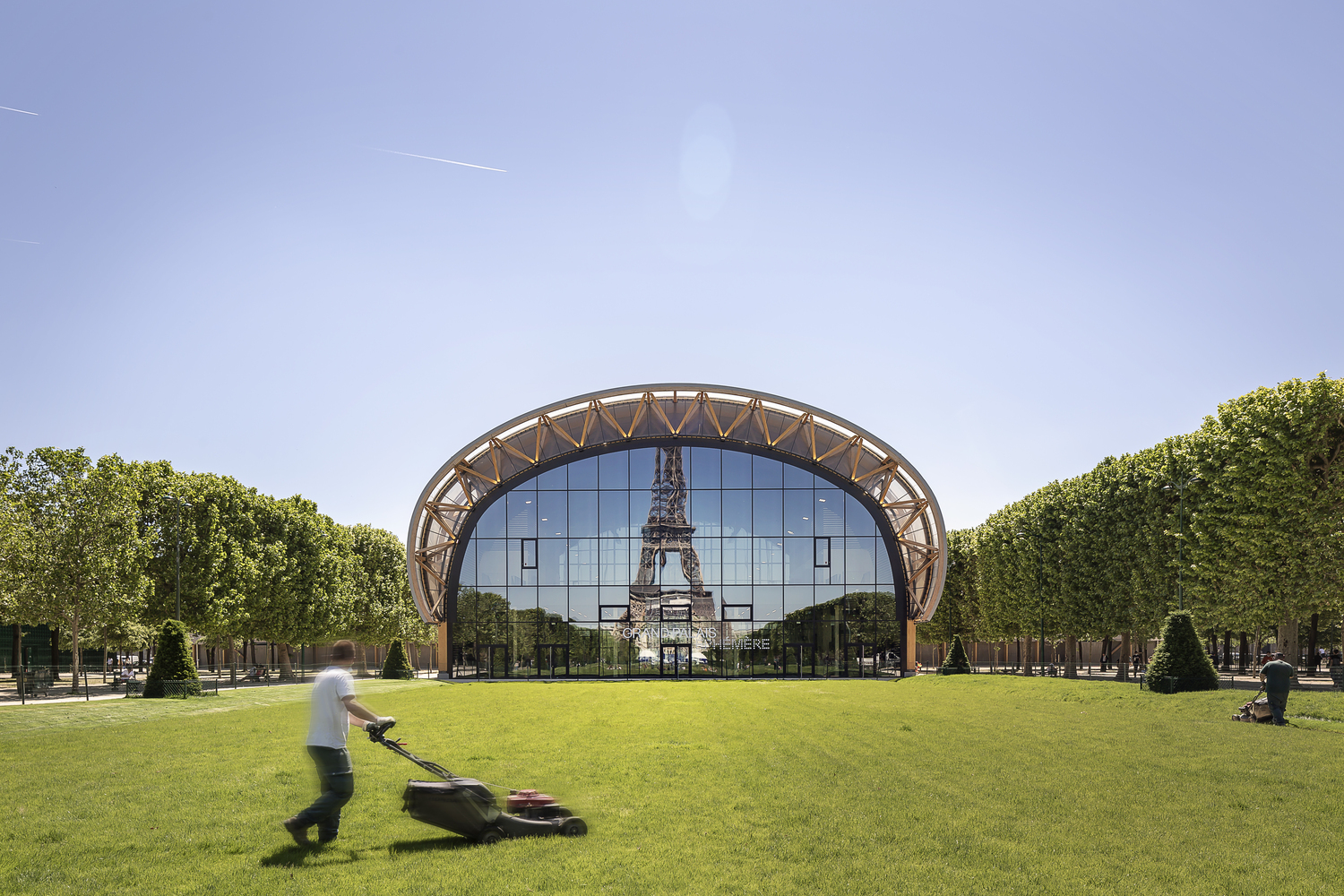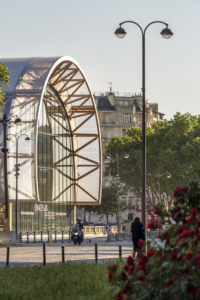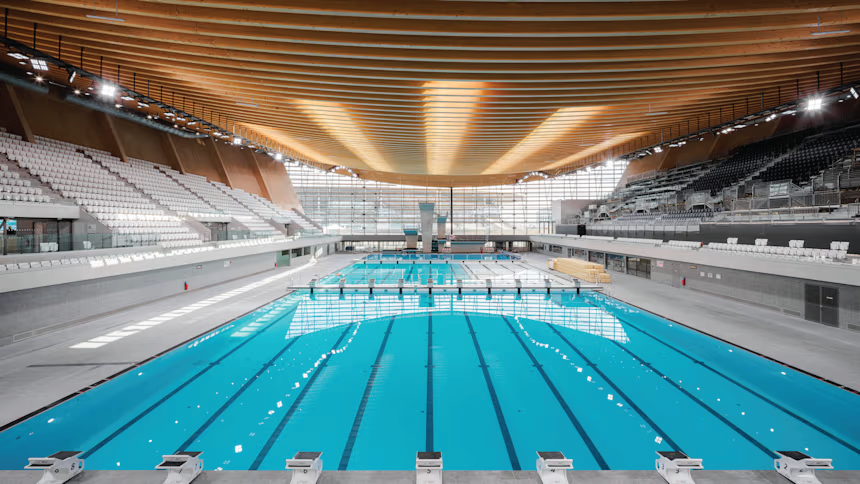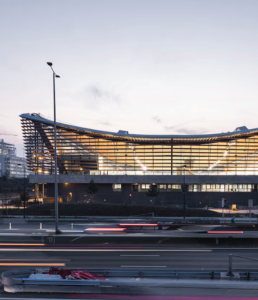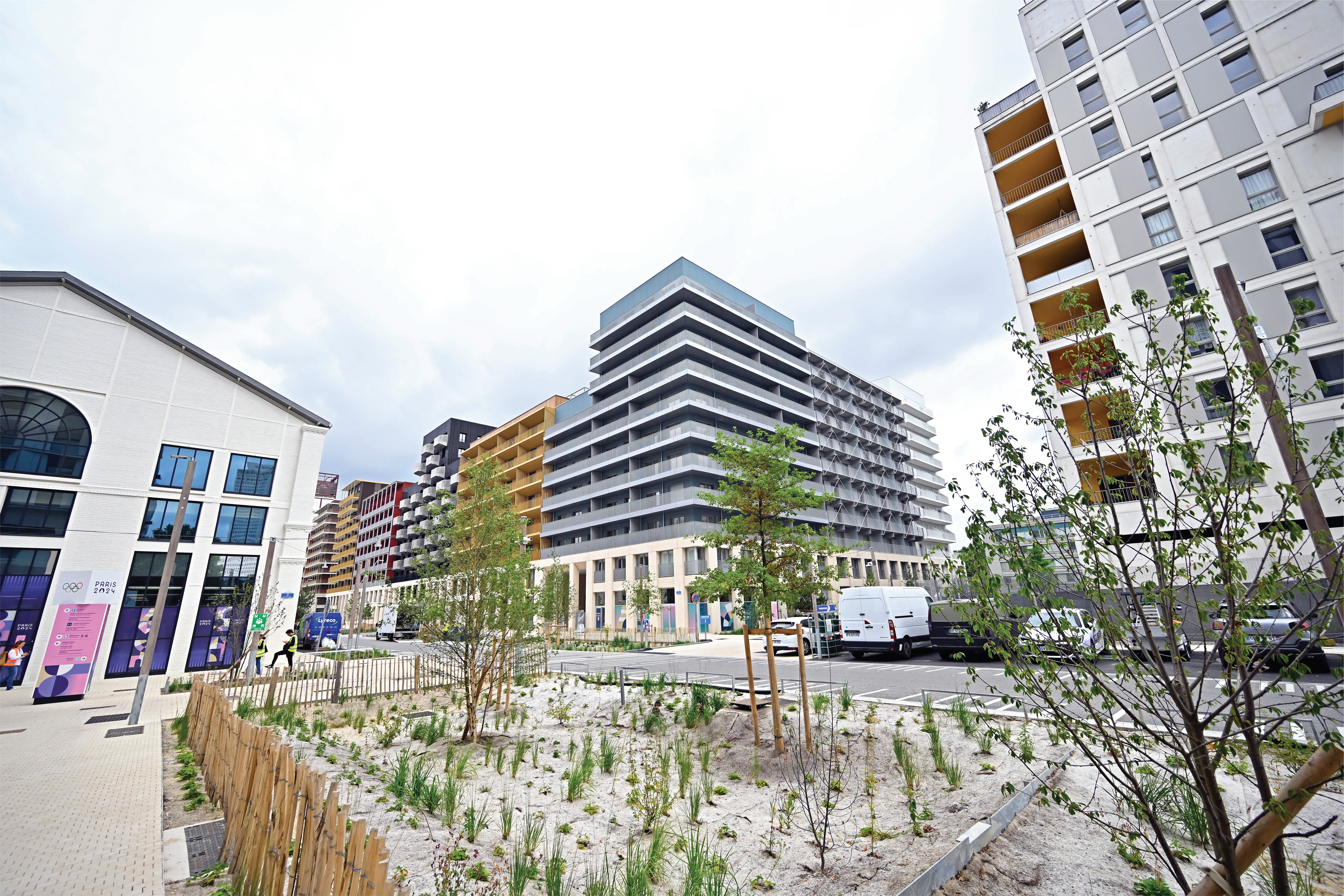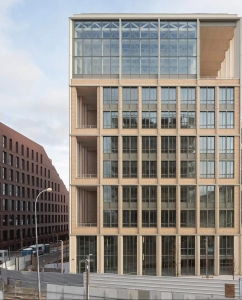The protagonists of the 2024 Olympics are different, as Paris has made a big bet on sustainability. And how can we talk about it without mentioning the engineered wood that has taken the podium in major constructions for this significant sporting event?
Mass timber, has been used in various constructions and sports facilities, both in the form of CLT (Cross Laminated Timber) for floors and slabs, and as GLULAM (Glue Laminated Timber) for beams, columns, and trusses. This is a key material for environmental and sustainability concerns, as wood is the only construction material that is renewable, recyclable, and also stores carbon.
MEET THE MAJOR WOOD PROJECTS THAT PLAY A FUNDAMENTAL ROLE IN THE 2024 OLYMPICS:
- The Grand Palais Éphémère
- The Paris Aquatic Center
- The Athletes’ Village
GRAND PALAIS ÉPHEMÈRE
This temporary structure was built in 2021 to host the main events and activities previously held at the Grand Palais in Paris (which was closed for renovations).
Located between the Eiffel Tower and the École Militaire on the Plateau Joffre, it features 1,500m³ of GLULAM (Glue Laminated Timber) and was assembled in just 3 months.
This installation is 100% recyclable, and it is estimated that 1,956 tons of CO2 have been absorbed by the wood used in its structure.
Location: Plateau Joffre | Paris
Construction date: 2021
Total area: 10,000m²
Architecture: Wilmotte et Associés
Engineers: Chabanne Ingénierie
Control and coordination: Socotec Construction
Photography: Jad Sylla Photography
PARIS AQUATIC CENTER
This construction is the only permanent structure built specifically for the Olympic Games, considering, of course, that the others to be used are either existing or temporary facilities.
The wooden roof of its main hall is curved, spans over 80 meters, and is made of 5,000 m² of GLULAM (Glue Laminated Timber).
The construction was designed to accommodate a significant number of stands while reducing the volume of the space, favoring heating, and decreasing energy demand, making this project even more sustainable.
Location: Saint-Denis | France
Construction date: 2024
Total area: 12,000m²
Architecture: Ateliers 2/3/4 / and VenhoevenCS
Engineers: Schlaich Bergermann
Project Managers: Arjen Zaal, Yves de Pommereau
Photography: VenhoevenCS + Ateliers
ATHLETES’ VILLAGE
This complex of buildings is located in the Paris metropolitan area, between Saint-Denis, Saint-Ouen, and L’Île-Saint-Denis, and includes 82 buildings, 3,000 apartments, and 7,200 rooms to accommodate up to 14,000 athletes during the Olympics.
The village is another facility designed to minimize atmospheric carbon, utilizing wood in various constructions and employing 100% renewable energy sources.
After the games, the village will be transformed into 6,000 social housing units for the local population, leaving a lasting sustainable legacy from the Olympics for the region.
PROJECT TECHNICAL SHEET
Location: Region between Saint-Denis, Saint-Ouen, and L’Île-Saint-Denis | France
Construction date: 2024
Total area: 330,000m²
Architecture: PETITDIDIERPRIOUX
Photography: Aurélien Meunier/Getty Images and Cyrille Weiner
FRANCE AND SUSTAINABILITY
All the construction projects and measures taken by France regarding sustainability highlight the government’s ongoing concern for the environment and its commitment to reducing the country’s carbon emissions. This approach not only promotes the use of more sustainable materials but also drives innovation in the construction sector.
It is precisely this focus on the planet that has made the country’s ambition of hosting the most sustainable games in history a reality. By not only reducing CO2 emissions but also showcasing the potential of engineered wood, France is demonstrating how this material is the construction solution for the future and for future cities.


